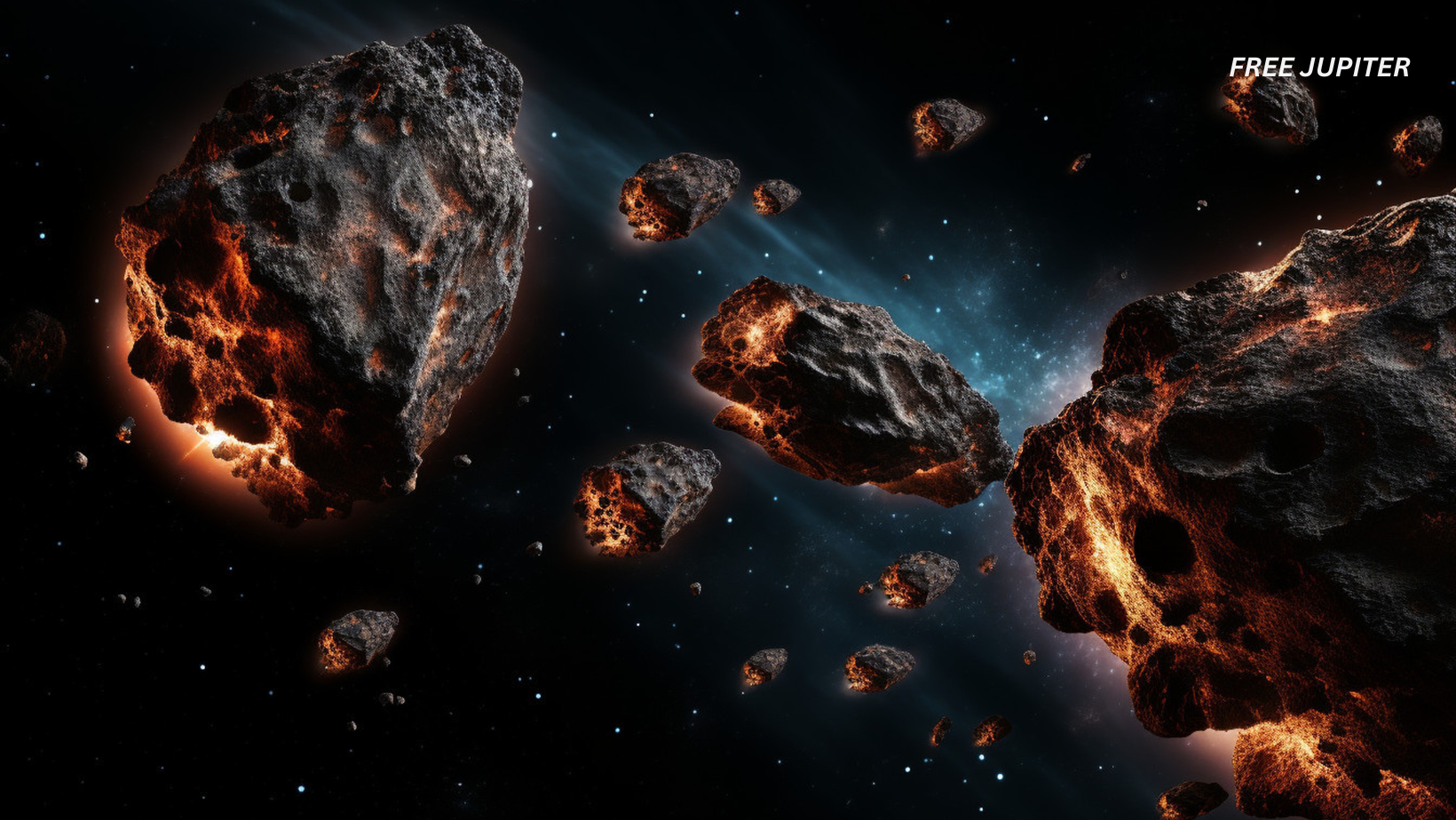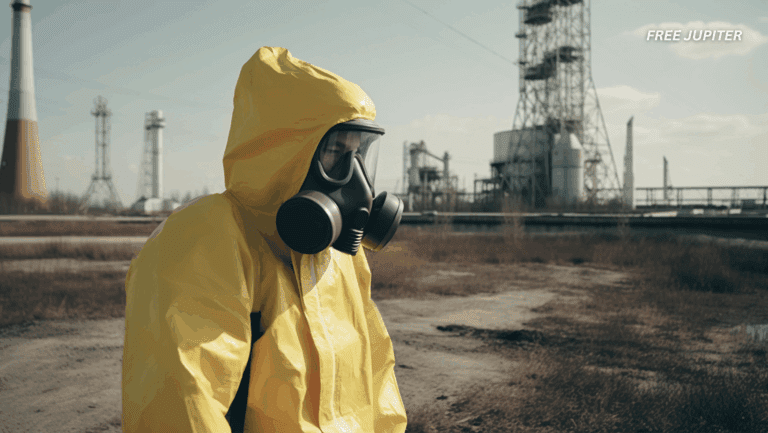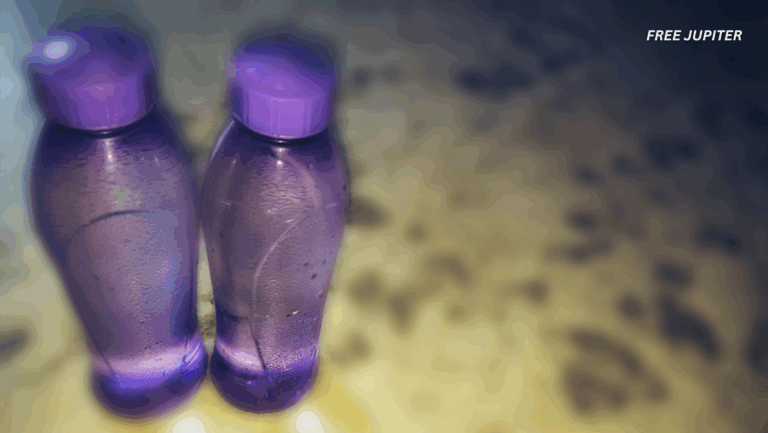Friendly Note: FreeJupiter.com shares general info for curious minds 🌟 Please fact-check all claims—and always check health matters with a professional 💙
In the vast and unpredictable expanse of space, scientists are now sounding the alarm on a cosmic threat that could be flying under our radar—quite literally. According to a new international study, at least three asteroids with the potential to cause catastrophic destruction on Earth are loitering near Venus. And the most unnerving part? They’re nearly undetectable from Earth.
Researchers from Brazil, France, and Italy have found that these asteroids share a special type of orbital relationship with Venus. They move in a synchronized dance with our neighboring planet, staying tucked neatly into positions that make them exceptionally difficult to spot. Thanks to the overpowering brightness of the sun, these space rocks are shielded from the view of Earth-based telescopes, earning them the nickname “invisible asteroids.”
But invisible doesn’t mean harmless. These celestial nomads, some stretching up to 1,300 feet in diameter, are following orbital paths that can bring them dangerously close to our planet. And if even one of them were to veer off course and collide with Earth, the results could be catastrophic on a scale not seen in modern history.
The Hidden Hazard Next Door
Venus, currently situated roughly 62 million miles from Earth, is our closest planetary neighbor at this moment. It’s also turning out to be an unintentional host to several potentially destructive space objects. These asteroids fall into a category called “co-orbitals.” This means they travel the solar highway alongside Venus, riding nearly the same orbital path around the sun.
Now, the term “co-orbital” might sound harmless—like a cosmic carpool—but it carries hidden dangers. While Venus’ gravity protects the asteroids from crashing into its surface, it does nothing to shield Earth. In fact, their synchronized orbit makes their trajectories wildly unstable and potentially prone to sudden changes. If their orbits are perturbed even slightly—by gravitational nudges from other planets or minor collisions with smaller objects—they could find themselves veering toward us.
According to the study’s authors, these asteroids don’t need to be exceptionally large to pose a global threat. Even a mid-sized rock on the smaller end of the detected range—around 330 feet in diameter—could pack an explosive punch far beyond conventional explosives. And the bigger ones? Their impact energy would be millions of times more powerful than the atomic bomb dropped on Hiroshima in 1945.
Read more: Scientists Have Just Discovered A Brand New Continent
Why We Haven’t Seen Them
Unlike the distant planetary systems we can observe with powerful telescopes, these nearby threats remain elusive. That’s because they linger in a patch of sky that’s effectively blinding from our perspective. Any asteroid parked between Earth and the sun—or close enough to the sun’s glare—becomes almost impossible to see with traditional observational equipment.
The area where these objects hide is similar to trying to spot a speck of dust while staring straight into a floodlight. It’s not that our telescopes are faulty; it’s that physics itself is working against us. Sunlight floods our field of view, masking the silhouettes of these stealthy wanderers. It’s this visual challenge that has left even the most well-funded and sophisticated asteroid-tracking programs, like those at NASA, struggling to keep tabs on the ones hiding near Venus.
So, despite our best efforts at planetary defense, some asteroids remain cloaked by their proximity to the sun. In many ways, it’s like trying to find a mosquito in a spotlight—the glare overwhelms everything else.
The Doomsday Potential
Let’s break down what could happen if one of these asteroids does slip through the cracks and makes a beeline for Earth. Even a relatively “small” asteroid could deliver an energetic wallop that dwarfs the most powerful weapons humans have ever deployed. We’re talking about explosions that could level entire cities, wipe out infrastructure, and generate shockwaves and tsunamis capable of rippling across continents.
The researchers note that these types of impacts don’t just devastate the immediate surroundings. They can have global implications. Dust and debris thrown into the atmosphere could block sunlight, disrupt weather patterns, and even plunge parts of the planet into a temporary cooling period.
It’s not science fiction. Earth has experienced events like this in the past—the most infamous being the asteroid impact believed to have triggered the mass extinction of the dinosaurs some 66 million years ago. And while the newly identified asteroids are not quite that large, they are still more than enough to alter the course of human civilization.
Read more: Geologists Have Just Discovered That India Is Splitting In Two
A Call for Space-Based Detection
So what’s the solution to this high-stakes game of hide-and-seek? The researchers behind this study argue that the key lies not in better telescopes on Earth, but in taking the search to space itself. Specifically, they propose sending a probe to orbit near Venus—far enough from the sun to avoid its overwhelming brightness, but close enough to peek into the blind spots our ground-based systems can’t see.
A probe stationed in the right position could effectively scan for any asteroids that lurk in Venus’ orbit. Unlike Earth’s telescopes, which are stuck behind our planet’s atmosphere and limited by solar interference, a space probe could act as a lookout in a far clearer environment. It would be like stepping away from the blinding floodlight to finally see the dust swirling in the beam.
The idea isn’t new, but this study adds urgency to its implementation. As the researchers note, if these asteroids are already dangerously close and difficult to monitor, time is not on our side.
How Often Do These Close Calls Happen?
The scary truth is that space is full of near-misses. On a regular basis, asteroids pass within a few hundred thousand miles of Earth—cosmically speaking, that’s a hair’s breadth. Most of the time, these encounters pass without incident. But every so often, a rock with a slightly different trajectory sneaks in much closer.
And these Venusian co-orbitals are especially hard to account for in predictive models. Their proximity to the sun means astronomers only catch glimpses of them when their orbits shift in just the right way. That means our window for early detection is slim at best, and entirely closed at worst.
It’s not just a matter of refining models—it’s about realizing that some things can’t be seen until we move to a better vantage point. That’s why the scientists behind this study are urging the global space community to consider sending dedicated detection equipment closer to the danger zone.
Could We Deflect One If It’s Found?
There’s been a lot of talk in recent years about planetary defense—ideas ranging from crashing spacecraft into incoming asteroids (as NASA’s DART mission recently demonstrated) to using gravity tractors or even lasers to nudge objects off-course. The good news is that if we detect a threatening asteroid early enough, many of these methods could, in theory, work.
But therein lies the rub—early detection. None of the proposed mitigation techniques can be effectively deployed if we don’t know what’s coming. These Venus-hugging asteroids are precisely the kind of objects that could sneak up on us with very little warning, which dramatically reduces our reaction time.
In other words, all the futuristic asteroid-deflection technology in the world won’t help much if the rock is already knocking on Earth’s door.
Read more: Scientists Once Drilled So Deep Into the Center of the Earth, They Knocked on the Mantle’s Door
Final Thoughts: The Cosmic Blind Spot
Earth has always been a target in the celestial shooting gallery we call the solar system. From tiny meteoroids that streak harmlessly across our skies to planet-sized collisions that sculpted our very continents, impacts have shaped our world—and will continue to do so.
What’s changing now is our ability to understand and anticipate these threats. But there’s still work to be done. The latest findings highlight a glaring blind spot in our planetary defense strategy: we’re good at watching the skies, but not so good at watching the skies behind the sun.
Until we fill in those observational gaps—perhaps with a mission that brings us closer to Venus’ orbit—we may be left in the dark about some of the most dangerous rocks in our neighborhood.
After all, in space, what you don’t see can hurt you.










